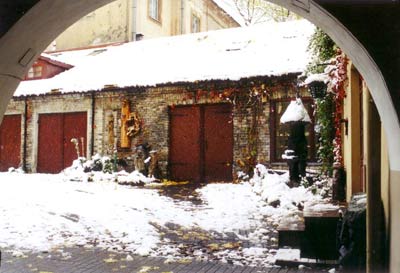| |
The origins of Lithuanian population come from Indo-European,
the Baltic people took place on the current territory
of Lithuania during
the first two centuries after JC.
In the XIIth century, Lithuania
affirms itself as a state with the growing of the Great-Duchy of Lithuania, whose
capital is Trakai. Larger country of Europe, the Great-Duchy of Lithuania extends from the Baltic to the Black
Sea and on a great part of the Russian and Belorussian plains.

|
|
Crowned in 1253, Mindaugas is the first Lithuanian
King. Lithuania converts to Christianity in 1385, following
the signature of the treaty of Kreva with Poland.
Consequently, it approaches Western Europe
and starts a sharp economic and cultural development. By the Treaty
of Lublin (Union of Lublin) in 1569, Lithuania
forms with Poland
a common State, which breaks down in 1795, with the annexation of a
great part of Lithuania
by Russia. Then,
during the First World War, Lithuania
is occupied by the German army. February 16, 1918, the Lithuanian Council
(Taryba) proclaims the independence of the Republic of Lithuania.
Independent between the two world wars, this period knows a great prosperity,
a national and an international development.

|
|






